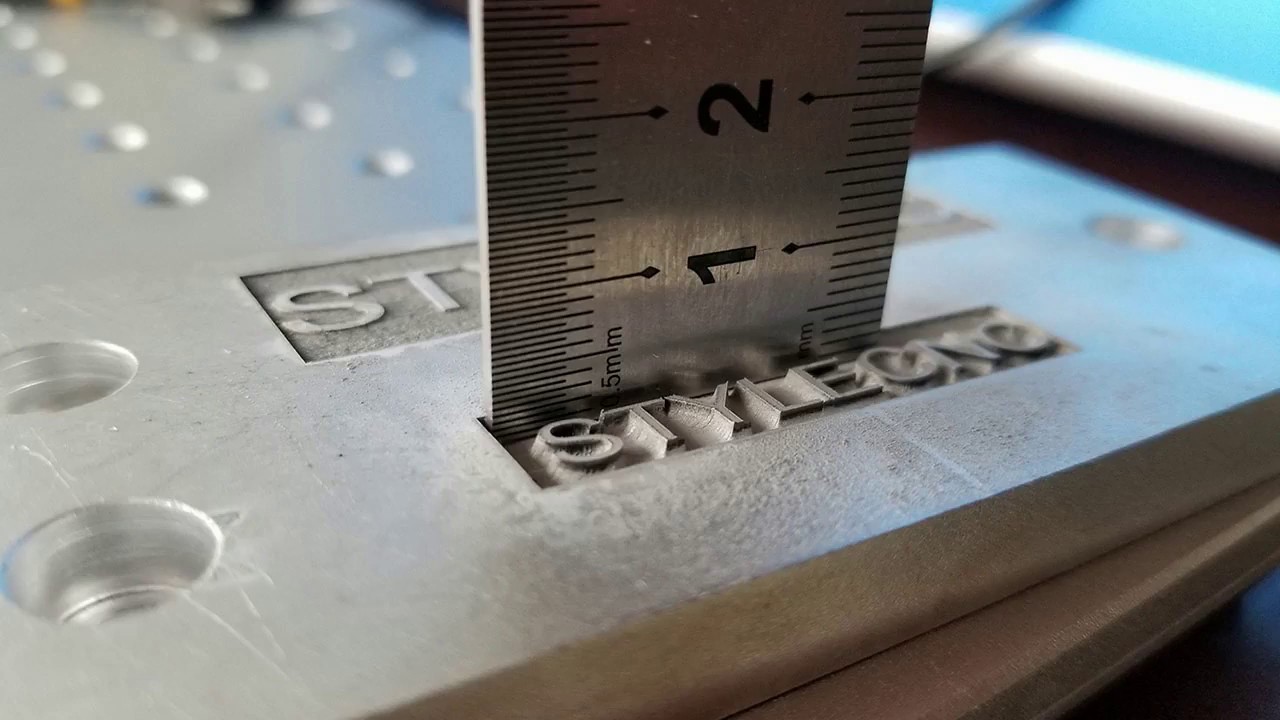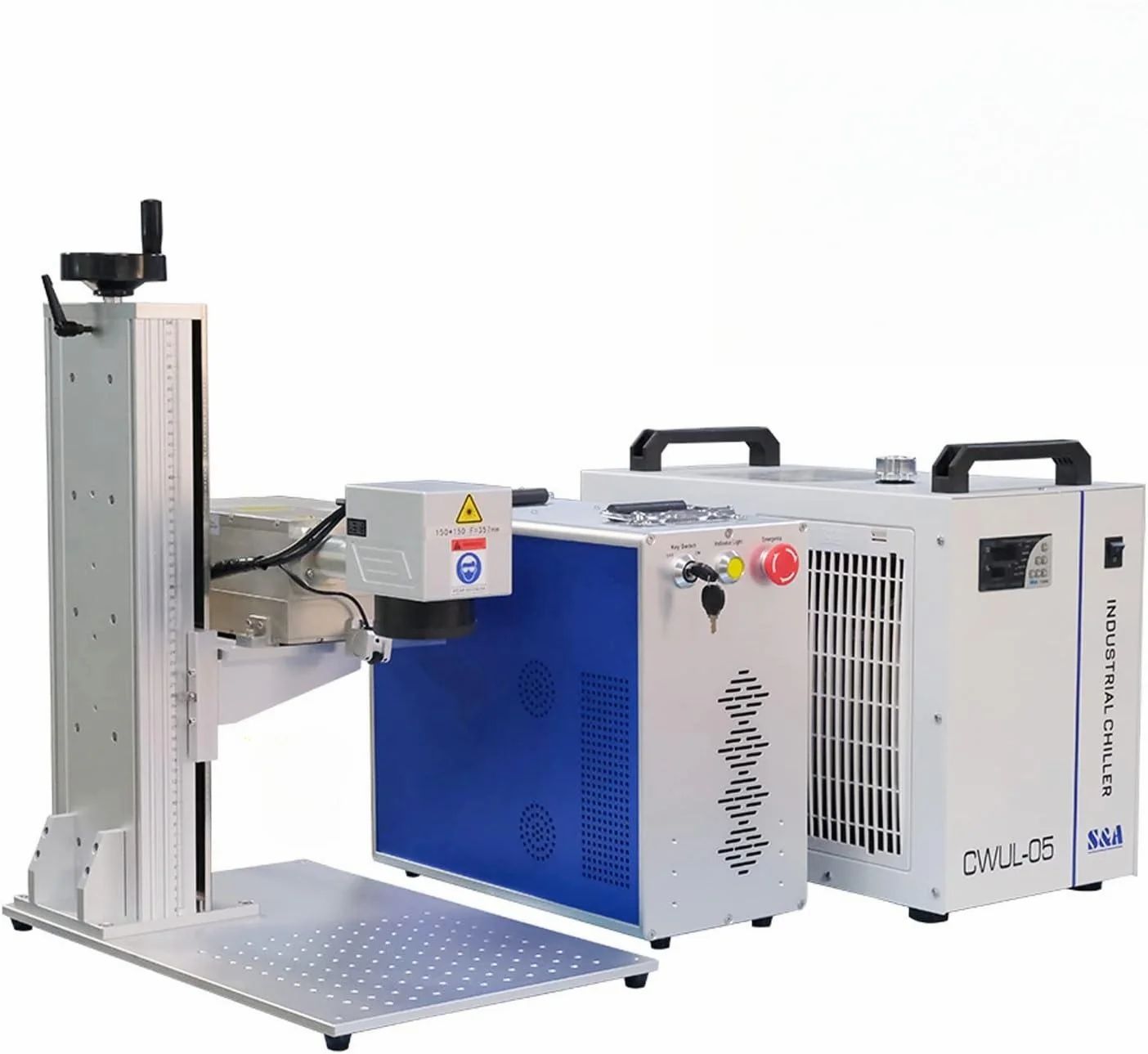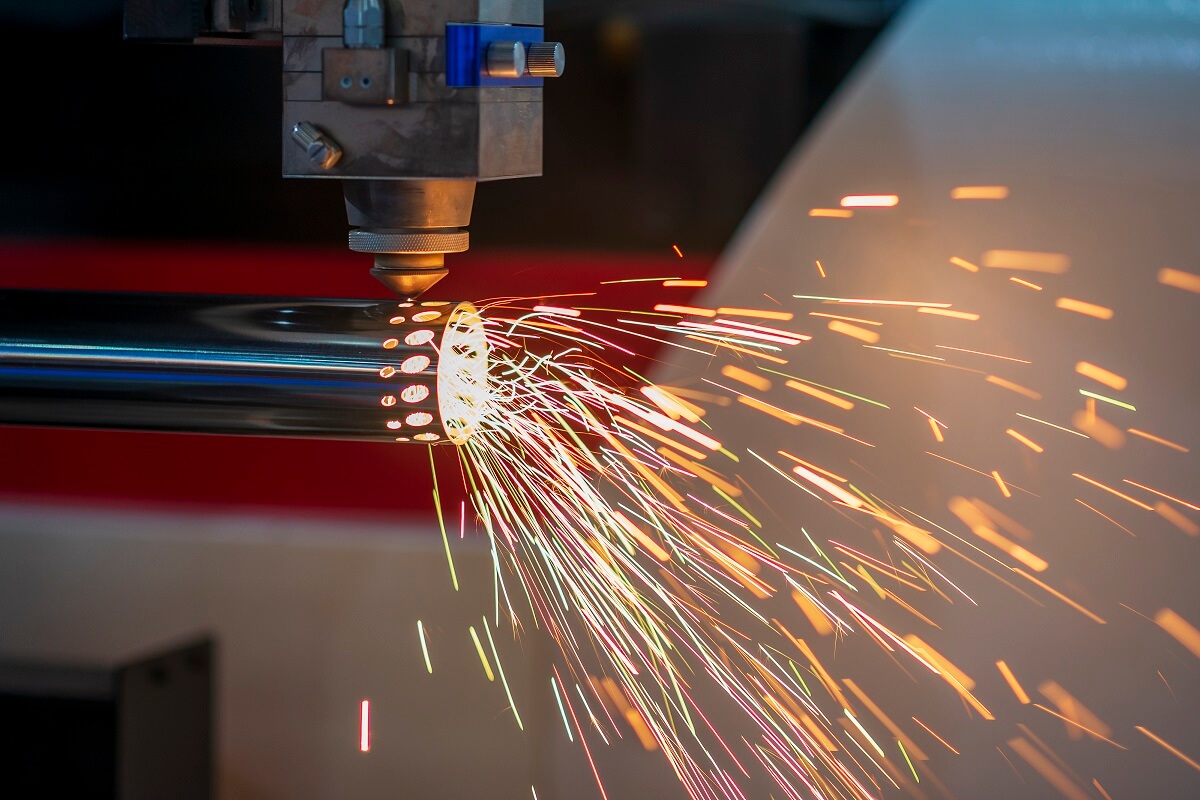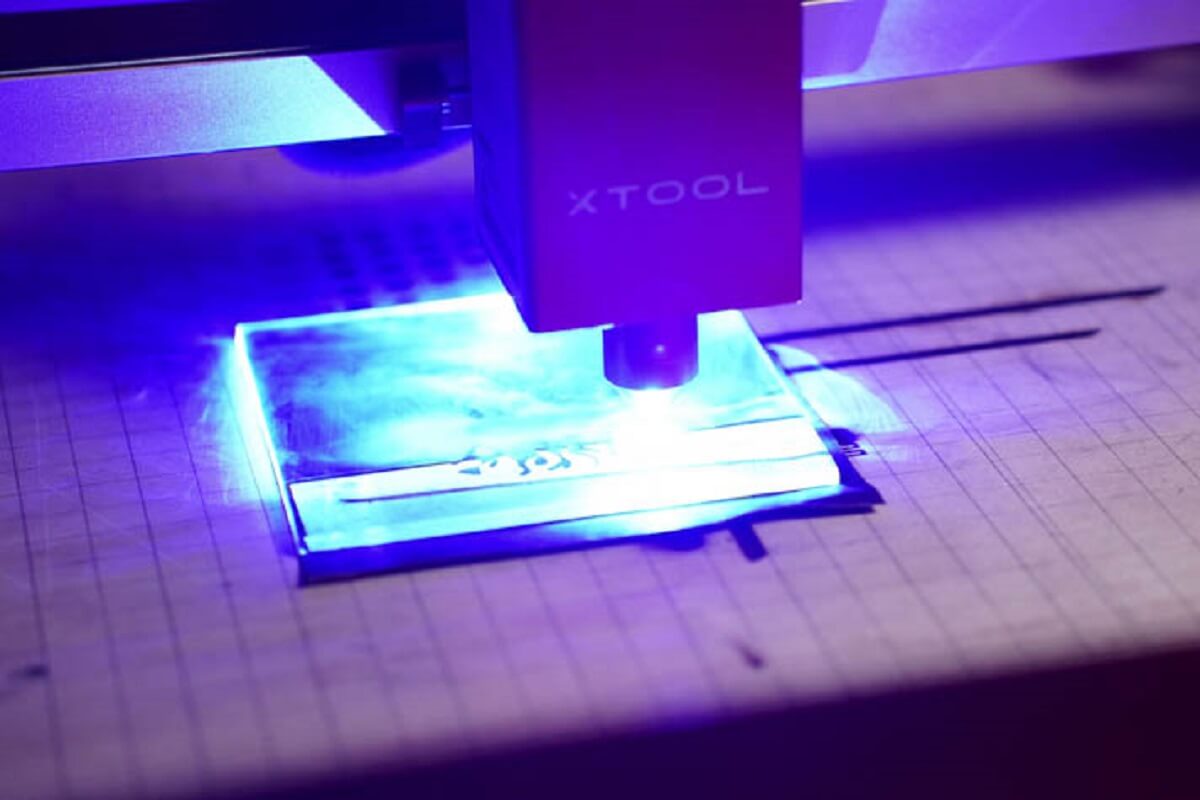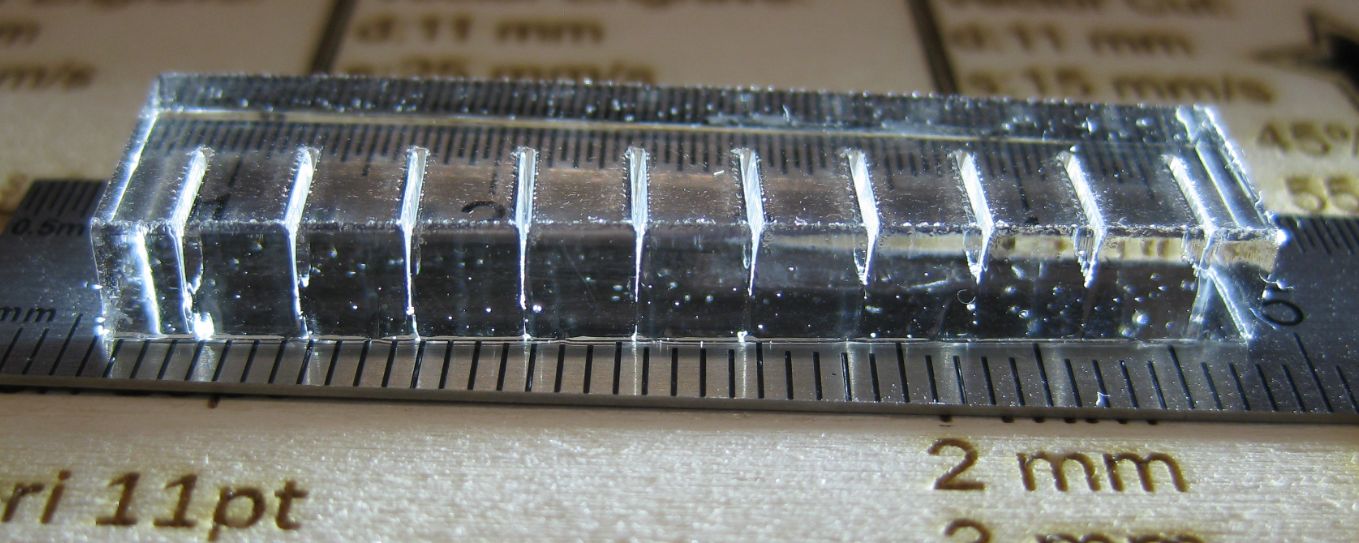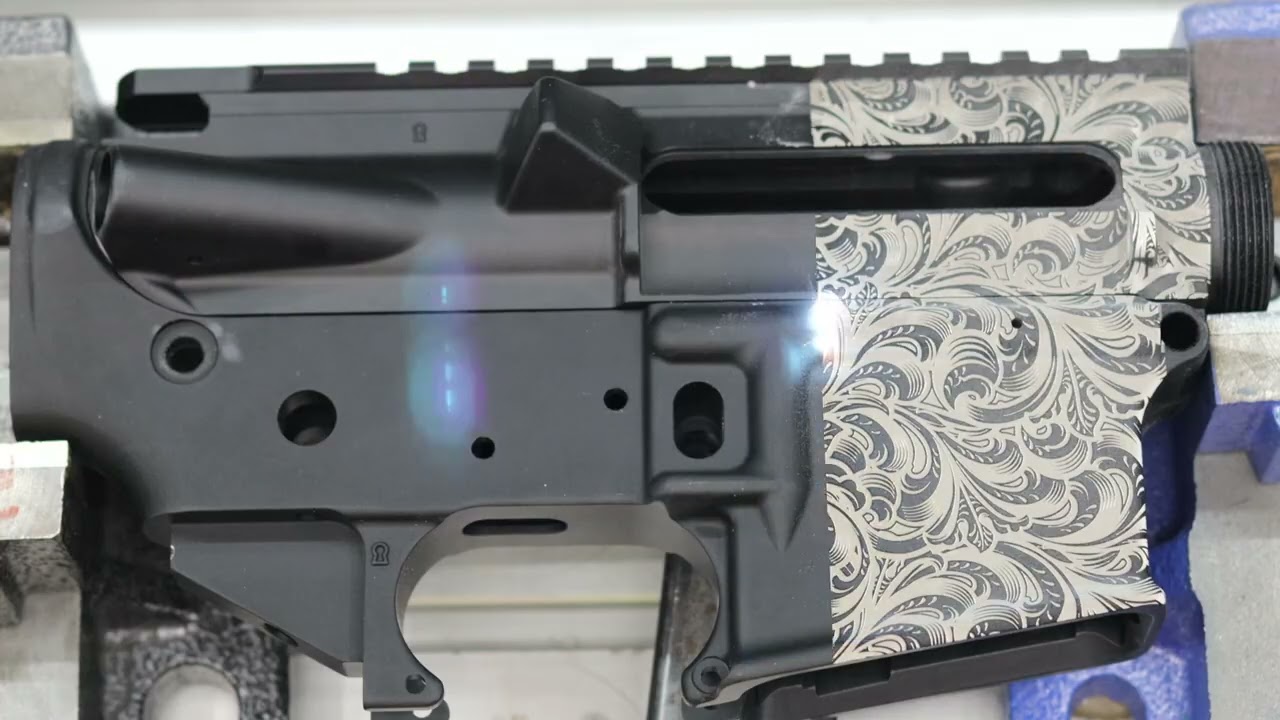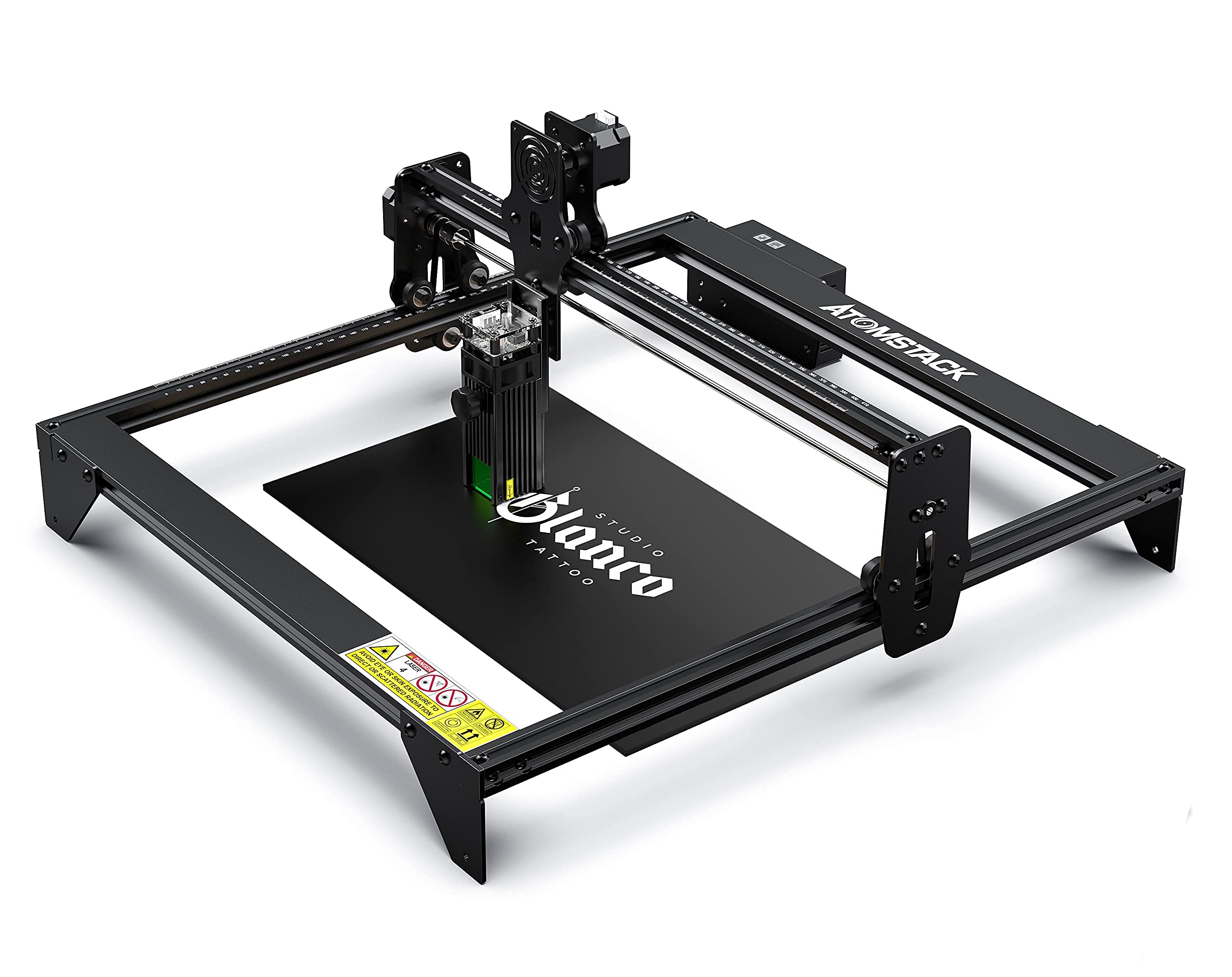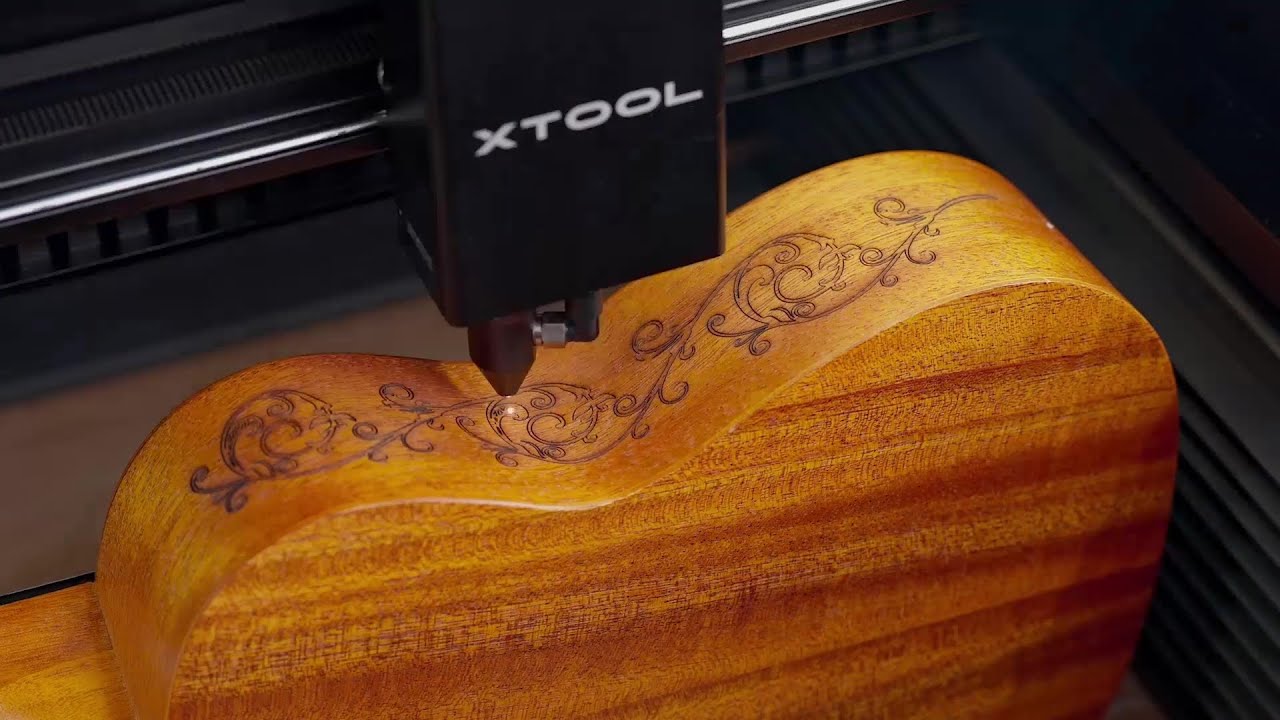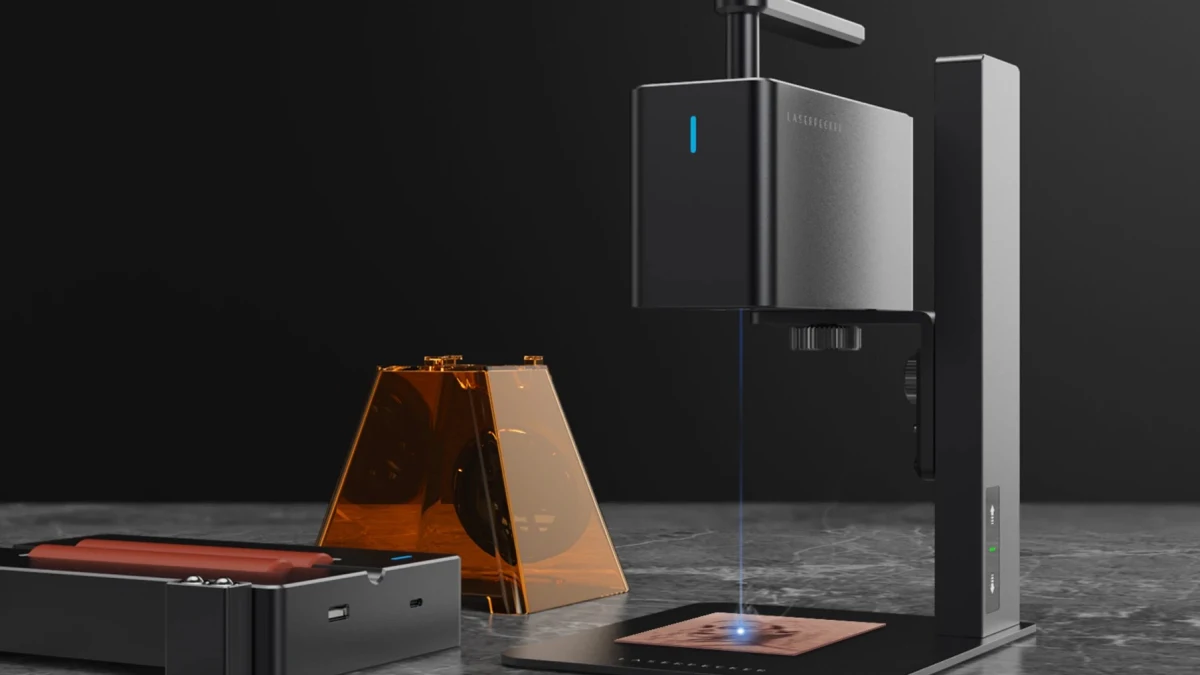Introduction
Welcome to the world of fiber laser engravers! Whether you’re a hobbyist or a professional, these remarkable machines have revolutionized the art of engraving. With their precision and versatility, fiber laser engravers have become an essential tool for countless industries and creative endeavors.
In this article, we will delve into the intricacies of fiber laser engravers, exploring their functionality, applications, advantages, and disadvantages. Whether you’re new to the concept or seeking to expand your knowledge, this article will serve as a comprehensive guide to help you understand the fascinating world of fiber laser engraving.
Standing at the forefront of laser technology, fiber laser engravers utilize advanced fiber optic technology to deliver superior engraving results. Unlike their CO2 counterparts, fiber laser engravers are known for their high precision, speed, and efficiency. These machines can engrave intricate designs on a wide range of materials, including metals, plastics, wood, glass, and more.
The growing popularity of fiber laser engravers can be attributed to their ability to achieve intricate designs with exceptional detail. Whether you’re engraving logos, text, or intricate artwork, these machines deliver consistent and high-quality results. Furthermore, fiber laser engravers offer superior speed compared to traditional engraving methods, allowing for quick and efficient production.
The versatility of fiber laser engravers is another key factor contributing to their widespread use. From jewelry making to industrial manufacturing, these machines find applications in a multitude of industries. Whether you’re creating personalized gifts, signage, or serial numbers on metal components, a fiber laser engraver can handle it all with ease.
As with any technology, fiber laser engravers come with their own set of advantages and disadvantages. Understanding these factors is crucial in determining whether a fiber laser engraver is the right choice for your specific needs. We will delve into these aspects in detail to help you make an informed decision.
So join us on this exploratory journey into the world of fiber laser engravers. By the end of this article, you will have a comprehensive understanding of their capabilities, applications, and how to choose the right machine for your requirements. Let’s dive in and discover the endless possibilities that fiber laser engraving has to offer!
What is a Fiber Laser Engraver?
A fiber laser engraver is a state-of-the-art machine used to engrave or mark various materials with precision and speed. It utilizes fiber optic technology to generate a focused laser beam that removes material from the surface, resulting in a permanent mark or engraving.
Unlike traditional engraving methods that rely on mechanical tools or chemical etching, fiber laser engraving uses a concentrated beam of light to achieve remarkable precision and clarity. The laser beam is emitted through a fiber optic cable, which ensures minimal loss of energy and enables high-quality engraving on a wide range of materials.
One of the defining characteristics of a fiber laser engraver is its wavelength. Fiber lasers typically operate in the range of 1,064 nanometers, which makes them ideal for engraving metals, plastics, ceramics, and even certain types of glass. The focused laser beam vaporizes or melts the material, creating a permanent mark that is highly precise and durable.
Fiber laser engravers are known for their high speed and efficiency. The laser beam can move rapidly across the surface, engraving intricate designs in a fraction of the time compared to traditional methods. This allows for efficient production and quick turnaround times, making fiber laser engravers highly sought after in various industries.
In addition to their speed and precision, fiber laser engravers offer a high degree of versatility. They can engrave a wide range of designs, including text, logos, images, and even complex patterns. The depth and intensity of the engraving can also be adjusted to meet specific requirements, resulting in highly customizable and professional-looking results.
Furthermore, fiber laser engravers are known for their low maintenance requirements and long lifespan. The absence of moving mechanical parts significantly reduces the need for repairs or replacements, making them a cost-effective solution in the long run.
Overall, a fiber laser engraver is a powerful tool that combines cutting-edge technology with exceptional precision. From personalizing gifts to industrial manufacturing, these machines have transformed the art of engraving and continue to be at the forefront of innovation in the field.
How does a Fiber Laser Engraver work?
Understanding the inner workings of a fiber laser engraver can help demystify the process and showcase its remarkable capabilities. At its core, a fiber laser engraver utilizes a combination of optics, a laser source, and computer-controlled mechanisms to create precise and detailed engravings.
The laser source in a fiber laser engraver is typically a fiber laser diode. This diode emits a high-intensity laser beam with a specific wavelength, usually around 1,064 nanometers. The laser beam then travels along a fiber optic cable, which acts as a conduit to guide the beam to the engraving area.
Once the laser beam reaches the engraving area, it passes through a focusing lens. The lens focuses the laser beam into a small, concentrated spot, allowing for precise control over the engraving process. The size of the spot can be adjusted depending on the desired level of detail and depth of the engraving.
When the focused laser beam contacts the surface of the material to be engraved, it interacts with the material in different ways. For metals, the laser beam vaporizes the surface layer, creating a permanent mark. For plastics and other materials, the laser beam melts or discolors the surface, leaving a visible engraving.
The movements of the laser beam across the material are controlled by a computer system. The computer software translates the desired design or pattern into digital instructions, known as G-code, which dictates the path and intensity of the laser beam. This precise control allows for the creation of intricate designs, detailed text, and complex images.
For some fiber laser engravers, a rotary attachment can be utilized to engrave cylindrical objects such as cups or bottles. The rotary attachment rotates the object while the laser beam engraves it, ensuring an even and consistent marking around the entire circumference.
Safety is a crucial aspect of using a fiber laser engraver. These machines are equipped with safety features such as enclosures, interlocks, and laser shields to protect operators from potential laser hazards. It is essential to follow proper safety protocols and wear appropriate protective gear when operating a fiber laser engraver.
In summary, a fiber laser engraver operates by utilizing a powerful laser source, optics, and computer-controlled mechanisms to create precisely engraved markings on various materials. This combination of technology and precision ensures that these machines deliver exceptional results for a wide range of engraving applications.
Applications of Fiber Laser Engravers
Fiber laser engravers have found widespread applications across numerous industries, thanks to their versatility and high precision. The ability to engrave on a wide range of materials makes them invaluable for various purposes. Here are some of the key applications of fiber laser engravers:
1. Personalization and Giftware
Fiber laser engravers are widely used for personalizing gifts and creating customized items. Whether it’s engraving names, dates, or special messages on jewelry, photo frames, or wooden plaques, these machines deliver intricate and personalized results that are treasured by recipients.
2. Industrial Manufacturing
In industrial settings, fiber laser engravers play a crucial role in marking components, serial numbers, or barcodes on a wide range of materials. The permanent and precise engravings help ensure traceability, quality control, and efficient inventory management.
3. Signage and Identification
Fiber laser engravers are commonly used for creating signage and identification plates. Whether it’s engraving logos, labels, or directional signs on materials like acrylic, metal, or wood, these machines offer exceptional versatility and clarity for producing professional and durable signage.
4. Jewelry Making
With the ability to engrave detailed designs on metals like gold, silver, and stainless steel, fiber laser engravers are indispensable tools for jewelry makers. From customizing pieces with intricate patterns to adding personalized messages, these machines provide precise and high-quality engraving on delicate materials.
5. Medical and Pharmaceutical Industry
Fiber laser engravers find applications in the medical and pharmaceutical fields for marking surgical instruments, medical devices, and packaging materials. The permanent engravings ensure product identification, traceability, and compliance with regulations.
6. Automotive and Aerospace Industries
In the automotive and aerospace sectors, fiber laser engravers are used for marking components, serial numbers, and logos on various materials such as steel, aluminum, and plastics. These engravings provide identification, tracking, and branding for the manufactured parts.
7. Electronics and PCB Manufacturing
Fiber laser engravers are utilized in the electronics industry for marking and engraving printed circuit boards (PCBs). These engravings help with component placement, identification, and improved traceability during the manufacturing process.
These are just a few examples of the wide-ranging applications of fiber laser engravers. The precision, versatility, and speed of these machines make them essential tools in industries where permanent, high-quality engravings are required. With advancements in technology, the scope of applications for fiber laser engravers continues to expand, enabling new possibilities for creative expression and industrial applications alike.
Advantages of Fiber Laser Engravers
Fiber laser engravers offer numerous advantages over traditional engraving methods, making them highly sought after in various industries. Let’s explore some of the key advantages of using fiber laser engravers:
1. High Precision
Fiber laser engravers deliver exceptional precision and detail, allowing for intricately engraved designs with sharp lines and fine details. The focused laser beam ensures accurate and consistent results, even on complex patterns or small text sizes.
2. Versatility
One of the significant advantages of fiber laser engravers is their ability to engrave on a wide range of materials, including metals, plastics, ceramics, wood, and more. This versatility makes them suitable for diverse applications across different industries.
3. Speed and Efficiency
Fiber laser engravers are known for their high-speed capabilities, significantly reducing the time required for engraving compared to traditional methods. This efficiency allows for increased productivity and quick turnaround times, benefiting both small-scale businesses and large-scale production environments.
4. Permanent and Durable Engravings
The engravings created by fiber laser engravers are permanent and highly resistant to wear and tear. The laser beam creates a deep, indelible mark on the surface, ensuring the longevity of the engraving without the need for additional coatings or treatments.
5. Minimal Maintenance
Fiber laser engravers have fewer moving parts compared to other engraving methods, resulting in reduced maintenance requirements. This translates to lower operating costs and less downtime, making them a cost-effective choice for businesses.
6. Flexibility in Design
With fiber laser engravers, designers have the flexibility to create intricate and complex designs, including fine lines, detailed text, and elaborate patterns. The depth and intensity of the engraving can be easily adjusted, allowing for highly customizable and professional-looking results.
7. Environmentally Friendly
Fiber laser engravers are eco-friendly compared to traditional methods that may involve the use of chemicals or other harmful substances. The engraving process is clean and does not produce chemical waste or emit harmful fumes, making it a greener choice for businesses and the environment.
These advantages make fiber laser engravers a preferred choice for a wide range of applications, from personalization and giftware to industrial manufacturing and beyond. The precise, versatile, and efficient nature of these machines ensures that the desired results are achieved with high quality, speed, and durability.
Disadvantages of Fiber Laser Engravers
While fiber laser engravers offer a multitude of advantages, it is important to consider their limitations and potential disadvantages. Here are some of the key drawbacks to be aware of:
1. Limited Color Options
One of the main disadvantages of fiber laser engravers is that they are primarily limited to creating marks or engravings in a single color. Unlike other methods such as UV printing or dye sublimation, fiber laser engravings are typically monochromatic, often appearing as a shade of gray or black.
2. Material Limitations
While fiber laser engravers can work with a wide range of materials, there are some limitations. Highly reflective materials, such as certain types of metals or mirrors, can be challenging to engrave due to the laser beam reflecting instead of being absorbed. Similarly, certain materials like PVC or vinyl can release harmful gases when exposed to high heat, making them unsuitable for fiber laser engraving.
3. Initial Investment and Maintenance Costs
The initial cost of purchasing a fiber laser engraver can be a significant investment, especially for small businesses or individuals. Additionally, while fiber laser engravers generally require minimal maintenance, any repairs or replacements of components can be costly. It is crucial to factor in these expenses when considering a fiber laser engraver.
4. Noise and Safety Considerations
Fiber laser engravers can generate noise during operation, which can be a concern in certain environments. It is important to consider noise levels and take appropriate measures to prevent disturbances. Additionally, safety precautions must be followed, as direct exposure to the laser beam can cause eye damage or other injuries.
5. Limited Depth Control
Although fiber laser engravers offer precise engraving capabilities, they may have limitations when it comes to creating deep engravings. Achieving significant depth can be challenging, and engraving detail may be affected for materials that require deeper marks.
6. Learning Curve and Software Requirements
Using a fiber laser engraver effectively requires a certain level of technical knowledge. Learning how to operate the machine, set parameters, and optimize settings for different materials may require training or experience. Additionally, utilizing design software or converting artwork into compatible formats for engraving may involve a learning curve.
Despite these limitations, the advantages of fiber laser engravers generally outweigh the disadvantages for many businesses and individuals. It is essential to consider these drawbacks and evaluate them in relation to specific needs and use cases before investing in a fiber laser engraver.
Choosing the right Fiber Laser Engraver for your needs
When it comes to choosing a fiber laser engraver, there are several factors to consider to ensure you select the right machine for your specific needs. Here are some key considerations:
1. Engraving Area
Determine the size of the engraving area you require. Consider the maximum dimensions of the materials you plan to work with to ensure the engraver can accommodate your needs. It’s essential to have enough space to engrave the desired designs without any limitations.
2. Power and Speed
The power output of the fiber laser engraver will determine the depth and speed of the engravings. Analyze the materials you plan to work with and the desired results to determine the appropriate power level. Faster engraving speeds are beneficial for high-volume production environments.
3. Software Compatibility
Ensure that the software used to control the fiber laser engraver is compatible with your computer system. Consider the ease of use, available design tools, and the ability to import and convert artwork into engraving-ready formats. Some engravers may come with their own specialized software, while others are compatible with popular design software.
4. Maintenance and Support
Consider the maintenance requirements of the fiber laser engraver, including periodic cleaning and the need for replacement parts. Research the reputation and availability of customer support from the manufacturer or supplier to ensure prompt assistance if any issues arise.
5. Budget and Return on Investment
Determine your budget and evaluate the price range of fiber laser engravers that meet your requirements. Consider the potential return on investment based on the type of engravings you plan to offer, production volume, and market demand. Balance the initial cost with long-term benefits and durability.
6. Safety Features
Ensure the fiber laser engraver is equipped with adequate safety features, such as interlocks, laser shields, and emergency shut-off switches. Safety should be a top priority to protect both operators and the environment from potential laser hazards.
7. Reviews and Recommendations
Read reviews and seek recommendations from reliable sources to assess the reputation and performance of different fiber laser engraver models. User feedback and experiences can provide valuable insights and help you make an informed decision.
By considering these factors, you can narrow down your options and choose the fiber laser engraver that best suits your specific needs and budget. Remember to thoroughly research and compare different models to ensure you select a reliable and efficient machine that will meet your engraving requirements for years to come.
Conclusion
Fiber laser engravers have transformed the art of engraving, offering high precision, versatility, and efficiency across a wide range of applications. These powerful machines have found their place in industries ranging from personalization and giftware to industrial manufacturing and beyond.
In this article, we explored the concept of fiber laser engravers, delving into their functionality, applications, advantages, and disadvantages. We learned that these machines utilize fiber optic technology to deliver precise engravings on various materials, providing permanent and durable marks.
The advantages of fiber laser engravers are clear – high precision, versatility, speed, and durability. They enable intricate and customizable designs, making them invaluable tools for personalization, industrial manufacturing, and other creative endeavors.
However, it is important to consider the potential disadvantages of fiber laser engravers, such as limited color options, material limitations, initial investment costs, and necessary safety precautions. These factors should be evaluated alongside specific requirements to ensure the right machine is chosen.
When choosing a fiber laser engraver, factors such as engraving area, power and speed, software compatibility, maintenance, budget, safety features, and reviews play significant roles in determining the most suitable machine for individual needs.
In conclusion, fiber laser engravers have revolutionized the art of engraving, offering precise, versatile, and efficient capabilities across a wide range of materials and applications. By understanding their functionalities, advantages, and limitations, individuals and businesses can make informed decisions when selecting a fiber laser engraver, unlocking endless possibilities for creativity and productivity.







